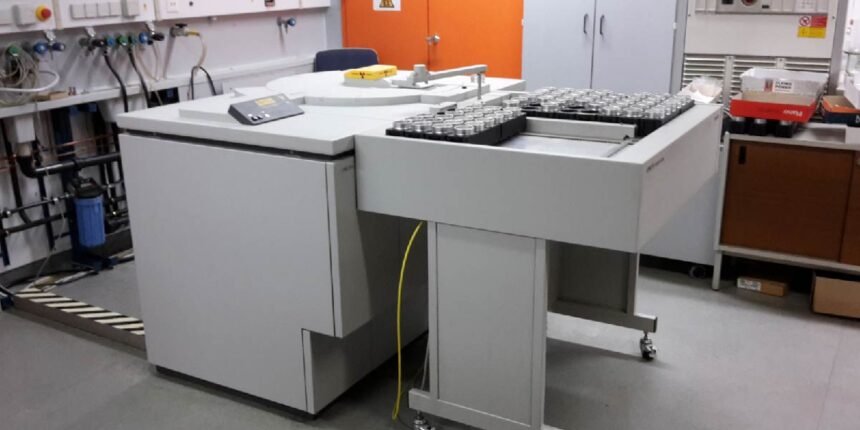An XRF analyzer is one of the instruments used to indicate and quantify elements within a sample. It operates through a process known as X-ray fluorescence(XRF). This very technology is less destructive, non-destructive, and is popular with a variety of industries.
Whether you are mining, recycling metals, looking after quality control, or doing archaeology, XRF analyzers can tell professionals what their material is.
What is the XRF?
XRF is short for X-ray fluorescence. This is an interaction in which materials produce fluorescent (or secondary) radiation, X-rays, due to exposure to high-energy X-rays or gamma rays. Read more.
These X-rays in fluorescence are elemental fingerprints. Each element possesses its X-ray pattern. Using this pattern, the analyzer will detect the presence of which elements.
XRF Analyzer: How Does it Work?
The X-ray source is one of the components of the analyzer. When the atoms of the sample facing run into the X-rays, they become excited, and in the process, emit secondary X-rays. Such X-rays are gathered, and these are analyzed.
This is how it works in general:
- The sample is exposed to X-rays.
- The sample atoms become excited.
- The atoms all go through the emission of energy via X-ray fluorescence.
- The level of the energy is registered by the detector.
- Computer programs sense the components and the amount.
- They normally take seconds to get results.
The XRF Analyzers Classifications
XRF analyzers are of two basic types:
- Benchtop XRF analyzers
Applied in labs or permanent environments
Give better precision and depth.
Perfect for precise chemical examination
- Portable XRF Instruments
Light and transportable, battery-operatedOn-sitete or in the field
Typical in scrap metal, mining, and environmental analysis
These two share the same principle, though they are used differently.
XRF analyzer industries
- The following are some of the industries that utilize XRF analyzerss XRF devices are used in the following industries: food safety and food standards, aluminum industries, electronics industries, food safety and food standards, laboratory, manufacturing industries, marine industries, metrology industry, mineral industries, medical industries, metallurgy industry, and pharmaceutical industries.
- Geology mining
- Testing of metals and alloys
- Scrap and recycling disposal facilities
- Environmental testing
- The quality of manufacturing control
- Pharmaceutical research
- Art andarchaeologyy
XRF can be applicable where it’s important to know what materials a material is composed of.
Advantages of XRF Analyzers
The use of XRF analyzers has a number of advantages which including the following advantages of using OTS technik XRF analyzers.
- Quick scan results- The majority of them just require 2-10 seconds.
- Non-Destructive Testing- The sample remains the same.
- Handheld options. Portable handheld options can be employed wherever one is.
- Multi-Element Detection- Detects more than one element simultaneously.
- Low operating cost: there is no use of gases and wet chemicals.
- Easy to operate with touch screens.
Safe at Correct Usage-Devices are shielded to ensure the protection of users.
What Can an XRF Analyzer Detect?
Elements that can be measured with XRF analyzers extend into the uranium (U) element. This is dependent on the device, and the range varies accordingly.
Element found widely:
- Iron (Fe)
- Copper (Cu)
- Zinc (Zn)
- Lead (Pb)
- Nickel (Ni)
- Gold (Au)
- Silver (Ag)
- Chromium (Cr)
They are also able to measure the percentage of the individual elements of the sample.
Sample Types to Use in XRF Testing
XRF is a good option on solid, powdered, or even liquid samples, e.g.:
- Metal parts
- Ores and rocks
- Paint chips
- Soil and dust
- Plastics
- Glass and ceramics
The preparation of samples is to the liking of the analyzer type and the degree of detail necessary.
Safety Considerations
XRF requires low amounts of X-rays. There is a low risk, but still, the rules of safety should be observed:
- Do not direct the device at someone.
- Put on shielding and safety gloves.
Basic radiation safety training:
Get basic radiation safety training.
Safety locks and sensors are incorporated in modern devices to safeguard the user.
XRF shortcomings
- XRF is great but imperfect. There are certain constraints about it:
- Very light elements (such as hydrogen or carbon) cannot be detected.
- The thin coatings degrade in accuracy.
- Roughness and moisture could be a problem here.
- Surfial depth detection is slow (reads only surface or near-surface)
All these notwithstanding, XRF happens to be one of the most convenient elemental analysis tools.
Conclusion:
So, XRF analyzers? Pretty much the unsung heroes of material testing. Seriously, you whip one out, zap a sample, and bam—you know what’s in it. No need to smash, melt, or destroy anything (which is honestly a relief unless you’ve got pyromaniac tendencies).
Doesn’t matter if you’re in some fancy lab or sweating bullets on a job site, these things spit out results faster than you can say “What even is this stuff?” Total lifesaver for anyone who needs to know what they’re working with—miners, metalheads, museum nerds, even folks making sure your lunch isn’t full of weird chemicals.
For More Information Visit Fourmagazine







